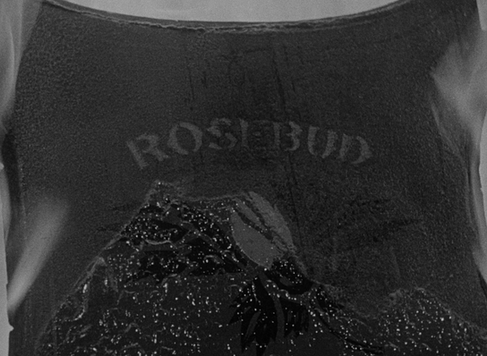Cinematography Analysis: Citizen Kane
- aneri shah
- Apr 19
- 6 min read
Through practical experience, research into film history, and personal introspection, I have come to realise that a cinematographer is much more than a creative image-maker on set. They are engineers—constructing innovative rigs and supports; physicists—calculating distances and optimal camera placement; and inventors—employing unconventional ideas to create unique imagery.
My Journey into Citizen Kane
I was drawn to the 1941 film Citizen Kane by Orson Welles due to its immense reputation in cinematic history and recommendation by many filmmakers, teachers, and friends. As a novice, upon watching the film for the first time, my initial reaction was, “This looks like a very regular film.”
However, upon rewatching and diving deeper into its layers of detail, I began to appreciate its seamless and lifelike quality. Unknown to me at the time were the ripples of impact the movie created in the history of Cinema. I uncovered how Gregg Toland’s cinematography introduced groundbreaking ideas for its time. This essay explores these techniques and their enduring impact.
The Cinematography of Citizen Kane
A Landmark Achievement
Citizen Kane is a cinematic milestone, especially for its revolutionary cinematography by Gregg Toland. The camera actively participates in the storytelling, guiding the audience’s perspective. This approach makes the camera (and thus the audience) feel like an all-seeing observer, creating a deeper connection between the characters and the audience.
Depth of Field
In the age of modern filmmaking, there is an obsession with shallow focus and blurred backgrounds. However, Toland’s extensive use of deep focus in Citizen Kane serves as a reminder that deep focus can serve as a powerful storytelling device (2016, BFI).
By keeping all elements in the frame, from the foreground to the background, in sharp focus, Toland allows multiple layers of action to occur simultaneously, encouraging viewers’ eyes to travel across the entire frame.

A renowned example is the scene where young Charles Kane is playing outside in the snow while his parents negotiate his future indoors.
In my opinion, deep-focus composition points out the irony of carefree Charles enjoying his childhood without knowing the future discussed behind closed doors of his home.
Shot Composition and Spatial Relationships
Toland and Welles frequently uses low-angle shots in the movie to make characters appear imposing or powerful. To get these unique angles, the crew innovatively cut sections of the set floor (2016, BFI) to allow the camera to be positioned lower than usual.
Another innovation was the inclusion of ceilings in scenes to make the space feel more natural and immersive. This was uncommon at the time due to lighting and sound equipment being placed above but the crew resolved this by creating ceilings from muslin sheets.
Toland used wide-angle lenses to distort space and perspective to manipulate the audience's perception of scale and emphasise certain emotions or dynamics.
In one scene, Kane is dwarfed as he walks toward a distant window - all while using a static shot, symbolising his diminished power and forthcoming failure.
Such visual techniques underscore Kane’s psychological and emotional descent.
Toland also used spatial relationships to convey power dynamics. One of the most interesting shots that I found was when Kane and Emily were in their palace. Placing the characters far apart in the big mansion, we can feel the distance creeping between them and get a sense of what is happening.

Creative Lighting and Symbolism
Inspired by Expressionism, Citizen Kane employs chiaroscuro lighting, creating strong contrasts between light and dark to convey mood and emotion. For example, we see gradual dimming of light on Kane’s face as he ages in contrast with the bright, youthful lighting of earlier scenes, symbolising his decline.
Lighting was also used dynamically within deep-focus shots. Characters moving in and out of illuminated areas subtly draw attention, replacing the need for focus pulling. Shadows were used to mask characters or objects to hint at moral ambiguity or hidden truths. For example, the reporter Thompson who is investigating about what “rosebud” meant is covered in shadows throughout the film. (2016, BFI)
Symbolism plays a vital role in Citizen Kane. The most memorable examples are the repeated use of the snow globe, representing Kane’s lost childhood, and the hall of mirrors shot, symbolising his fractured identity (2016, BFI).
An isolated close-up of Charlie’s sled in the beginning of the film covered by the snow, establishes its importance. The final shot reveals the sled (“Rosebud”) consumed by flames, symbolising the destruction of Kane’s childhood and innocence. This imagery leaves the audience to reflect on the film’s central mystery and themes of loss and unattainable desires.
Long Takes and Non-Linear Storytelling
Toland and Welles frequently employed long takes to give the audience an uninterrupted and live-action, theatre-like feel. One notable long take occurs during the scene where Kane’s political rival exposes his affair. I learnt that long takes can be used to heighten the tension and allow the drama to unfold naturally.
The film’s non-linear storytelling, rare at the time, was supported by cinematographic techniques that helped distinguish different timelines and narrators. I observed brighter imagery in “flashbacks” and darker images in the “present” time.
Cinematic Mastery in One Scene: The Breakfast Table Montage
In my opinion, one of the most iconic scenes in Citizen Kane that masterfully combines deep focus, creative lighting, symbolic imagery, shot composition, and dynamic blocking is the “Breakfast Table Montage.”
This scene unfolds the breakdown of Charles Kane’s 9 years of marriage to Emily in only 6 scenes covered in 2 minutes.
Using Deep focus throughout the montage keeps both Kane and Emily in sharp detail, even as they sit at opposite ends of the table. The clarity in the background hints additional cues to reflect the passage of time, such as the changing decor.
Shot composition strongly suggests their slowly deteriorating marriage, with the table itself acting as a visual metaphor for their progressive emotional disconnect. Initially, Kane and Emily sit closer together, engaged in conversation. However, as time progresses, the table lengthens, visually symbolizing their growing distance. By the final shots, their strained relationship is captured through framing that isolates each character, highlighting their emotional isolation. (2016, BFI)
Lighting matches the changing tone of the relationship. Initially, soft lighting conveys warmth and intimacy, but as tensions rise, harsher contrasts and shadows dominate, illustrating the coldness between the couple.
Finally, the blocking shifts subtly to reflect power dynamics. In the beginning, Emily is shown confident with frames featuring her independently, but Kane increasingly dominates the frame and conversation as his arrogance grows, ultimately overshadowing her.
The seamless integration of these techniques in this single scene is a splendid example of the innovation of Citizen Kane, turning simple domestic moments into a powerful commentary on relationships and power.
Legacy and Key Takeaways
Citizen Kane’s cinematography has inspired countless filmmakers, from Stanley Kubrick to Steven Spielberg. Deep focus is seen in The Godfather (1972), while its chiaroscuro lighting is seen in Blade Runner (1982). The film and its iconic elements are referenced many times in books, films, cartoons and more.
For me, the key takeaways from Citizen Kane are:
Use deep focus to tell multiple layers of a story within a single frame.
Show, not tell using composition and blocking.
Use lighting to convey mood, highlight power, and hide truths.
Incorporate symbolism to add deeper meaning (e.g., snow globe, mirrors).
Use long takes for immersive storytelling and uninterrupted performances.
Experiment with angles and perspectives to manipulate scale and power dynamics.
Adapt production techniques to innovate within technical limitations.
Conclusion
From viewing Citizen Kane as a “regular” film to understanding its monumental impact on cinema, this journey has profoundly shaped my perspective on filmmaking.
In the words of Spielberg, “Citizen Kane is an icon of courage” (Spielberg, AFI, 2011)
By studying this masterpiece, one can come to appreciate the importance of standing on the shoulders of cinematic giants to get inspired and learn deeply.
Bibliography
Higham, C., (1970). The Films of Orson Welles. University of California Press, p.11.
20 inspired visual moments in Citizen Kane (2016) BFI. Available at: https://www.bfi.org.uk/features/20-inspired-visual-moments-citizen-kane (Accessed: January 7, 2025).
Dunn, Linwood., 1974. Special Effects Cinematography. Journal of the University Film Association 26, no. 4, 65–81. http://www.jstor.org/stable/20687263.
Carringer, R. L. (1975). Citizen Kane. Journal of Aesthetic Education, 9(2), 32–49. https://doi.org/10.2307/3331733
Merlock Jackson, K. (2020) “citizen Kane, collecting, and the American character: What, why, and how Charlie collects,” The journal of American culture, 43(1), pp. 18–26. Available at: https://doi.org/10.1111/jacc.13114.
ReferencedBy / Citizen Kane (2016) TV Tropes. Available at: https://tvtropes.org/pmwiki/pmwiki.php/ReferencedBy/CitizenKane (Accessed: January 7, 2025).
YouTube / Citizen Welles (no date) Youtu.be. Available at: https://youtu.be/N6Xfm8GBPuQ?si=hofKLKJG8o9JwDo9 (Accessed: January 7, 2025).
IMDb / Welles, O. (1941) Citizen Kane. United States.
YouTube (no date) Youtu.be. Available at: https://youtu.be/qk0-m_LARCY?si=cgaQLUxXt6PFLpAW (Accessed: January 9, 2025).
OpenAI (2025) ChatGPT: AI Language Model. Available at: https://chat.openai.com/ (Accessed: 17 January 2025).

































